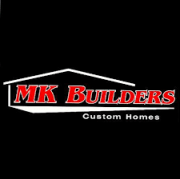If you need to get your roof repaired, you’re not alone. Every year, homeowners spend billions of dollars repairing and replacing their roofs. The good news is that most roof repairs are relatively easy and inexpensive to fix.
In this guide, we will teach you everything you need to know about roof repair:
- Cost of repairs
- The steps involved
- Signs to look for
- DIY roofing tips
- How to patch a small leak
- And more.
We’ll also provide some tips for avoiding common roofing problems in the first place!

Signs You Need Roof Repair
The signs of a roof issue can come in many forms and aren’t always apparent—especially to the untrained eye. But knowing the signs of a roof leak or other problem can save you a ton of time (and money) by catching and repairing it as soon as possible.
As a homeowner, it’s up to you to maintain and preserve the integrity of your home. So taking care of it also means watching for signs of damage or issues that require your attention. And head our warning: the longer you put off repairs, the worse your damage (and repair bill) is going to be.
So here are some obvious (and not-so-obvious) signs you need a roof repair:
- You have higher than usual energy bills. This can be caused by leaks in your roof or a lack of insulation.
- The paint or wallpaper on your walls is peeling. This could be a sign of water damage caused by a leaky roof.
- Your ceiling has spots, stains, or is damp to the touch. This means your roof likely has a water leak and should be repaired. It can also be a sign of trapped moisture from poor insulation and ventilation in the attic. Either way, your roof needs to be addressed before mold grows.
- You can see daylight coming through in your attic. This is likely a sign of a significant hole in the roof, often caused by years of wear and tear. If your roof is in this condition, you will need an entire roof replacement.
- You have missing or damaged shingles. After a storm, you will want to do a walk-through of your property (inside and outside). Look at your shingles, and if you notice any out of place, cracked, dented, or even missing, call for repairs right away.
- Your attic’s insulation is flat or wet. Roof leaks or trapped moisture in the attic can deteriorate your insulation. Periodically check the insulation for any issues because the second this goes, the second your roof and attic are susceptible to trapped moisture, which can cause mold or mildew growth.
- You have recurrent ice dams every winter. Ice dams are caused by inefficient temperature control in the attic. What happens is the ice and snowmelt at the top of your roof (where heat is escaping) and re-melts at the bottom near the gutters.
- Your flashing is exposed or damaged. Flashing is vital to making waterproof seals around chimneys, pipe boots, roof vents, valleys, and more. The moment these are damaged is the moment your roof is at risk of water damage. After a hail or wind storm, ensure your flashing is still intact.

What Can Cause Roof Damage?
As your roof ages, it does go through a bit of wear and tear and eventually will need to be replaced. But your roof can also be damaged, most often caused by:
- Strong winds
- Hailstorms
- Heavy rains
- Debris falling on the roof
- Failed DIY repairs
- Hurricanes
- Tornadoes
While most of these are out of our control, there are a few things you can do to help prevent roof damage and extend the life of your roof:
- Keep trees trimmed away from the house (and especially the roof).
- Make sure your gutters are clear and free of debris.
- Re-insulate your attic/roof.
- Regularly inspect and maintain your roof.
How Much Does it Cost to Repair Your Roof?
The cost to repair your roof depends on many factors.
- Are you submitting an insurance claim?
- Are you making the repairs yourself?
- How severe is the damage?
- Are your materials available?
- How high-end are your roofing materials?
For the most part, people submit insurance claims to get their roofs repaired from storm damage. However, the cost can vary greatly, even based on where you live, but especially how extensive the damage is.
How Much Do Minor Repairs Cost?
Most minor roof repairs can be done with basic tools and materials you already have around the house (if you’re a handy homeowner). They might cost you between $100-$1,500, which isn’t worth submitting an insurance claim for. Minor repairs might include:
- Cleaning out your gutters
- Fixing a small hole
- Removing water stained drywall
- Replacing a damaged shingle
- Replacing damaged flashing
How Much Do Major Repairs Cost?
Major repairs will be more costly because they require a professional to fix the problem. More major roof repairs will cost between $1,500 and $7,000 or more. And they may include repairs such as:
- Chimney repair
- Extensive water damage
- Flashing repairs
- Mold removal
- Roof sagging (reinforcement)
- Shingle replacement (larger scale)
Tips for Getting Insurance to Pay for Your Roof
When your roof is damaged during a storm, it’s a good idea to first get an inspection to reveal the extent of the damage, then file an insurance claim. But there are some rules and regulations that can affect how much money you get from insurance to pay for your roof repairs.
For the most part, it might be your best bet to pay for repairs out of pocket and save insurance claims for a total roof replacement down the road. However, there are some tips for getting insurance to pay for your roof repairs.
- Read and understand your insurance policy thoroughly. The last thing you want is to be surprised by what your homeowner’s insurance will or won’t cover.
- Add-on vital coverages when you sign up for your insurance. Things like hurricane or flood insurance aren’t standard practice and need to be added as an additional item to your insurance. Depending on where you live and the frequency of certain weather, you would be remiss not to include it.
- Don’t wait to file a claim. The longer you wait, the more likely your insurance will deny your claim or only pay for a portion of the repairs needed.
There are situations where insurance will not cover repairs for your roof. For example, if you caused the damage, they will not cover it. And trust us when we say that professional roofers and insurance adjusters will be able to tell during the inspection. So word to the wise, if you think you cannot handle your own repairs, always contact a professional.

How to Patch a Small Leak
Sometimes your roof may have a tiny little leak that you can quickly repair yourself. But be very careful not to mess up anything as you do your repair. Failed DIY repairs can void warranties or even make matters worse. So make sure you have the proper tools, materials, and steps to follow to get it done right.
To repair a small leak, you’ll need the following:
- Roof patch
- Caulk + caulking gun
- Flashlight
- Bucket
- Gloves + safety glasses
Find the leak by searching near any water stains. Often, a small leak is caused by a rusted or frozen roofing nail. Check all your nails on the roof decking and use caulk to seal around the nail.
You can also use roof patches or tar to seal larger cracks that show obvious signs of water spots. These are temporary fixes but are an effortless way to remedy a small leak and buy time. They can also be repaired on the inside, so you don’t have to risk getting up on a ladder and the roof to repair.
The Pros and Cons of DIY Roof Repair
There are pros and cons to both doing a DIY roof repair or hiring a professional.
Pros of Doing It Yourself:
- You’ll save money – This is the biggest pro for doing it yourself. If you have some basic tools and knowledge about roofing repairs, you can do most minor repairs yourself and save hundreds (or even thousands) of dollars.
- You’ll have control over the job and timeline – When you do a repair yourself, you’re in charge. You can take your time, make sure it’s done right, and not have to worry about someone else messing it up.
- It’s a learning experience – Even if you don’t fix the roof perfectly on your first try, it’s a good learning experience. And you can always hire someone to come in and finish the job or do future repairs.
- You feel a sense of pride and accomplishment – When you finish a job yourself, you get a sense of pride that comes with knowing you did it yourself.
Cons of Doing It Yourself:
- It’s risky – One wrong move, and you could seriously injure yourself (or even worse). Roofing is not for the faint of heart and should only be attempted by those who are comfortable.
- You could make the problem worse – This is the biggest downfall of DIY anything. If you don’t know what you’re doing, you could easily make the problem worse or cause new problems.
- It takes time – Doing it yourself takes longer than hiring someone to do it. So if you’re short on time or need the repair done quickly, DIY is not the best option.
- You risk voiding warranties – If you have a warranty on your roof and attempt to do repairs yourself, you could void the warranty. So it’s always best to check with the manufacturer or roofing company before attempting any repairs.
Easy Tips for Fixing a Leaky Roof
Both DIY homeowners and professionals alike can benefit from some simple tips for finding and repairing a leaky roof. We’ll go through the steps of how to do it, how to find tough leaks, and how to repair them step-by-step.
Pinpointing the Roof Leak
Roof leaks might be easy to see the signs of but challenging to find the actual leak itself. Because the tiniest hole can cause a massive water stain, it’s essential to know how to find the leak to repair it. Here are a few tips:
- Look for stains on your shingles from the outside.
- Take a flashlight and look at the roof directly above the water stains if you have attic access.
- Look for mold or mildew spots.
- Use a hose on the roof to run water and have someone inside the attic looking for immediate drips.

Fixing Plumbing Boots and Roofing Vents
The plumbing boots and roofing vents are one of the most susceptible spots for a roof leak. Those roofing components are placed in a hole you cut in the roof to fit. Then flashing and caulk is used to make a watertight seal, but those don’t last forever.
High winds can shake these roofing components enough to loosen up and leave gaps exposed to rainwater. If you suspect or confirm that your pipe boots or vents are the cause of the leak, follow these steps:
- Remove surrounding shingles gently to expose the flashing and edge of the pipe boot or vent.
- Carefully remove the flashing, caulk, or any other materials on the edges of the boot/vent.
- Check the pipe boot itself for any cracks or damage. If it is damaged, you will need a new one before putting it back in place.
- Ensure there is no mold or water damage on the edges of the roof decking where you will place the new component.
- Once the pipe boot or roofing vent is in place, install the flashing on the edges, caulking it when you’re done to ensure a tight seal.
- Replace the shingles you removed, careful not to damage any of them.
Repairing and Installing Step Flashing
Step flashing goes along dormers or walls up on your roof. Basically, anywhere your roof meets an edge, you need to install step flashing. Water is going to run along that edge every time it rains, and without proper flashing, it will just leak right down the edge into your walls. Steps to repair step flashing include:
- Remove any shingles or roofing materials that are in the way of accessing the flashing.
- Carefully remove any nails or staples holding the flashing in place.
- Inspect each piece of step flashing for damage and repair or replace as needed.
- Once all the pieces are repaired/replaced, nail them back into place and reattach the shingles.
The video below offers an excellent step-by-step installation process.
Fixing Leaks Around the Chimney
The chimney can be a common spot for roof leaks, especially if the flashing has not been installed correctly or it’s starting to wear out. If you’re experiencing a leak around your chimney, follow these steps:
- Remove any shingles or roofing materials that are in the way.
- Inspect each piece of flashing for damage and repair or replace it as needed.
- If there are cracks in the bricks, you will need a mason to fix those leaks.
- Attach new flashing and replace the shingles you removed.
Tips for More Complex Roofing Issues
If you discover the leak you thought was small is much more complex and extensive, stop what you’re doing and hire a professional roofer. Attempting to repair large-scale roofing repairs on your own can only end in disaster.
Whether you get in over your head or make a mistake, your best bet is to set your tools down and call Apple Roofing.
When to Repair Vs. Replace
While storm damage often requires just a repair, sometimes the damage is severe enough to require a total replacement. So it’s important to know when it’s time to repair your roof vs. when it’s time to replace it altogether.
When to Repair Your Roof
If your roof has minor to moderate damage and is less than 15 years old, repair is a perfect solution. Other times it’s appropriate to repair your roof is if:
- Only a few shingles are damaged
- You experience hail damage
- Shingles get lifted from wind damage
- You just got it installed a few years ago
- You are under warranty
- If the repairs are due to workmanship or manufacturer issues
When to Replace Your Roof
Meanwhile, a replacement is a much grander and expensive scenario. Roof replacements often aren’t covered by insurance unless it was severely damaged, and repairs won’t cut it. Here are some situations where replacement is required:
- You have extensive damage from a natural disaster
- You want to boost curb appeal with a new roof
- Your roof is at or past its expected lifespan (20+ years old)
- You want to sell your home for more money
- You want to upgrade to a more premium roofing material
Tips for Upholding Your Roof’s Integrity
While roof damage can occur completely against your control at any given moment, maintaining your roof to stay in good shape is still vital to upholding its integrity and helping it protect your home.
Regular maintenance of your roof can prevent leaks, high heating bills, and make it last even longer. Some tips for maintaining your roof include:
- Cleaning out the gutters.
- Get your roof cleaned every few years.
- Keeping up with minor repairs to prevent leaks and water damage.
- Ensure your attic is adequately insulated.
- Removing snow and ice when appropriate.
- Scheduling annual roof inspections.
- If you live in an area with severe weather conditions, taking extra steps to fortify your roof can go a long way.
- Take the time to trim branches that are close to or touching your roof, as they can damage shingles and lead to leaks during a storm.
- Do a quick inspection after every big storm. This is especially true if there was hail or high winds.
- Sign up for a maintenance plan with your local roofer
Overall, just pay attention, do your own regular inspections, and document anything that looks off. This can all come in helpful when the time does come for you to require repairs or replacement.
Choosing a Reputable Contractor to Get the Job Done Right
Ultimately, the best thing you can do to get your roof repaired is to find a reputable, trustworthy contractor to get the job done right the first time. At Apple Roofing, we offer outstanding roof repair that will give your home continued protection for the life of your roof.
We’ve built our business on providing our customers with world-class service and high-quality workmanship. So when you need roof repair, you can trust that our team will provide you with the best possible solution for your needs and budget. So get a hold of us at the first sign of roof damage, and we’ll be there to help.
























